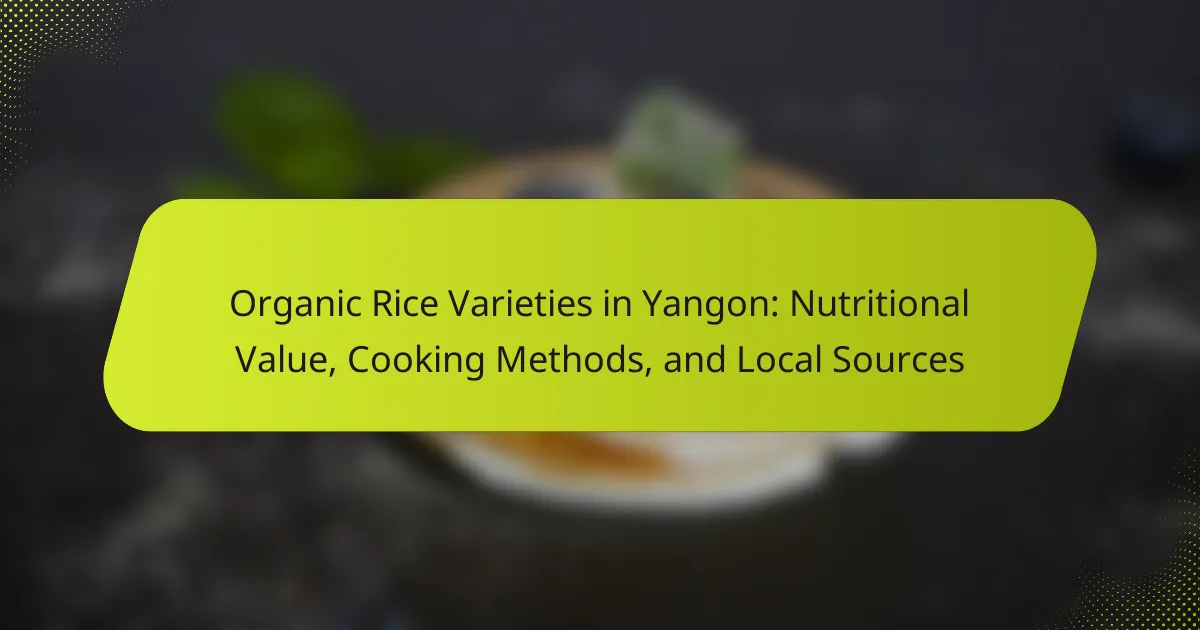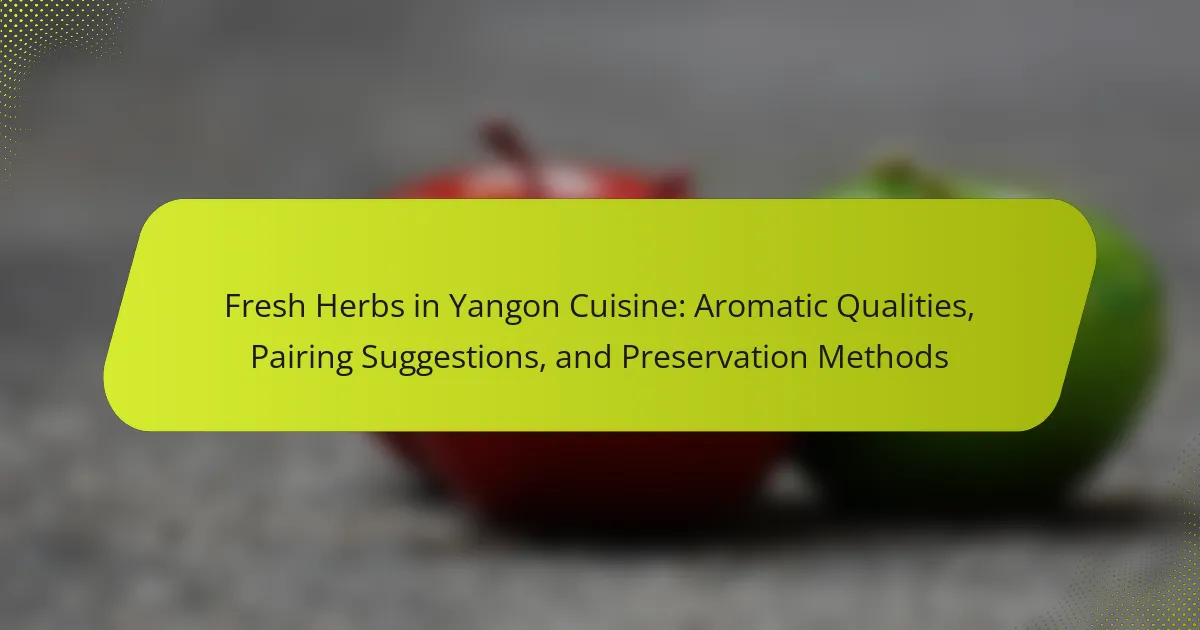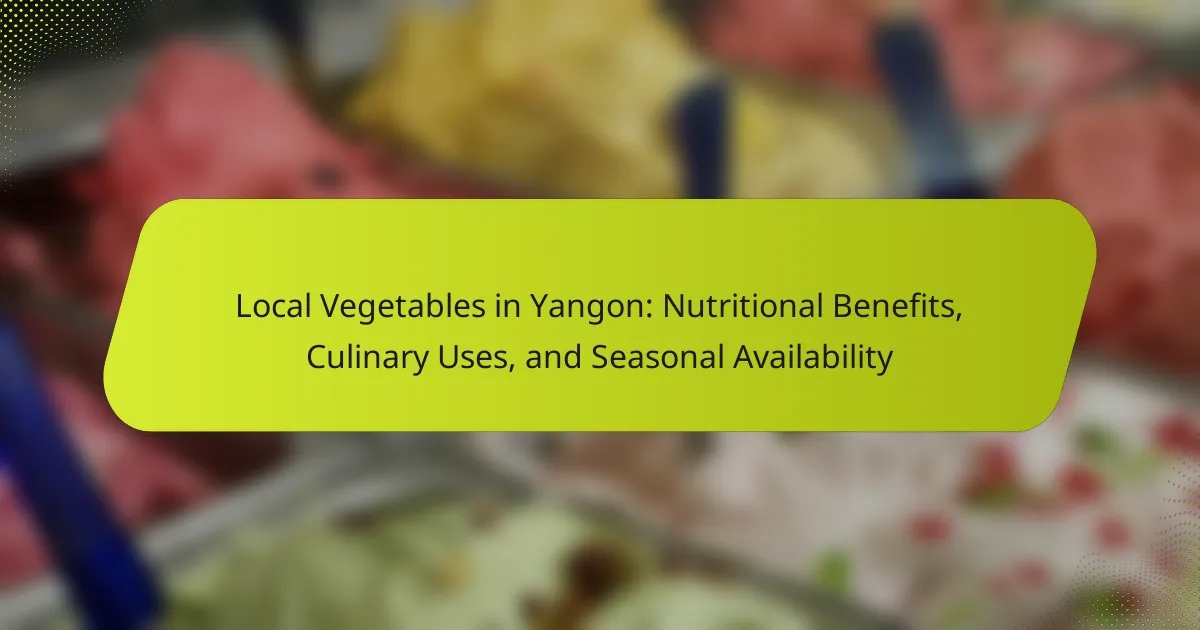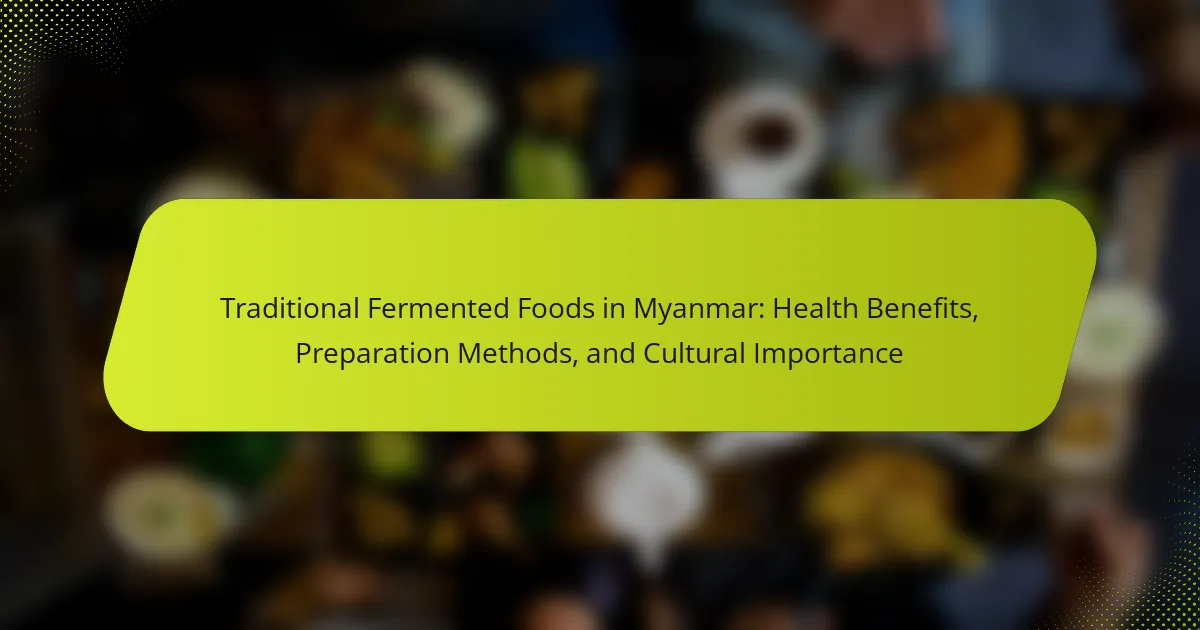Artisanal honey from Myanmar is a high-quality product made by local beekeepers using traditional methods, primarily sourced from wildflower nectar. This honey is characterized by its unique flavor profiles, rich in beneficial enzymes and antioxidants, enhancing its health benefits. Harvested in small batches, it retains its natural characteristics, reflecting Myanmar’s diverse flora and cultural heritage. […]

Organic Rice Varieties in Yangon: Nutritional Value, Cooking Methods, and Local Sources
Organic rice varieties in Yangon include Paw San, Khao Hlan, and Khao Nyaung, each with distinct characteristics and benefits. Paw San is known for its fragrant aroma and sticky texture, while Khao Hlan is valued for its high yield and nutritional content. Khao Nyaung is recognized for its unique taste, often featured in traditional dishes. […]

Fresh Herbs in Yangon Cuisine: Aromatic Qualities, Pairing Suggestions, and Preservation Methods
Fresh herbs are vital components of Yangon cuisine, enhancing the flavor and aroma of various dishes. Commonly used herbs include cilantro, mint, and basil, which are integral to salads, soups, and curries. These herbs not only elevate taste but also contribute to the visual appeal of meals when used as garnishes. The article explores the […]

Traditional Spices of Myanmar: Flavor Profiles, Health Benefits, and Cooking Techniques
Traditional spices of Myanmar, including turmeric, ginger, garlic, and chili, play a crucial role in the country’s culinary landscape. These spices are valued not only for their unique flavor profiles but also for their health benefits. Various cooking techniques, such as sautéing, boiling, steaming, fermentation, and grilling, are employed to enhance the flavors and nutritional […]

Local Grains of Yangon: Nutritional Benefits, Cooking Techniques, and Regional Varieties
Local grains of Yangon, including rice, millet, and sorghum, play a vital role in the region’s diet and culinary traditions. Rice serves as the staple grain and is fundamental to Burmese cuisine, often accompanied by various dishes. Millet is widely utilized in traditional recipes, while sorghum, though less common, still contributes to local diets. This […]

Local Vegetables in Yangon: Nutritional Benefits, Culinary Uses, and Seasonal Availability
Local vegetables in Yangon, including leafy greens, root vegetables, and herbs, play a crucial role in traditional Burmese cuisine. Common examples are watercress, mustard greens, and eggplant, which are rich in essential nutrients such as vitamins, minerals, and antioxidants. Seasonal availability, particularly during the rainy season from June to October, influences the freshness and variety […]

Traditional Fermented Foods in Myanmar: Health Benefits, Preparation Methods, and Cultural Importance
Traditional fermented foods in Myanmar, such as ngapi (fermented fish or shrimp paste), pickled vegetables, and fermented rice (htamanè), are essential components of Burmese cuisine and culture. These foods are rich in probiotics, vitamins, and nutrients that enhance digestive health, boost immune function, and support overall well-being. The preparation methods involve natural fermentation processes using […]

Unique Fruits of Myanmar: Taste Descriptions, Cultural Significance, and Preparation Tips
Myanmar is known for its unique fruits, including cherimoya, salak (snake fruit), longan, and various mango varieties like Himsagar. These fruits are characterized by distinct flavors and textures, contributing to their cultural significance and culinary uses in traditional dishes. Additionally, the health benefits of these fruits are notable, with nutrients that support overall wellness, such […]

Sustainable Seafood in Yangon: Sourcing Practices, Health Benefits, and Cooking Styles
Sustainable seafood in Yangon is seafood sourced responsibly to maintain fish populations and minimize environmental impact. This practice supports local fisheries and aquaculture methods that adhere to regulations aimed at preventing overfishing. The rising demand for sustainable seafood is driven by increased awareness of ocean health and the benefits of consuming seafood rich in protein, […]
